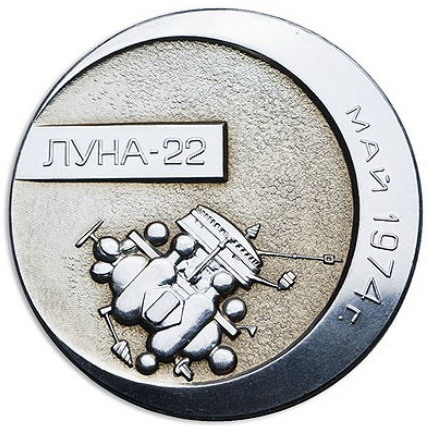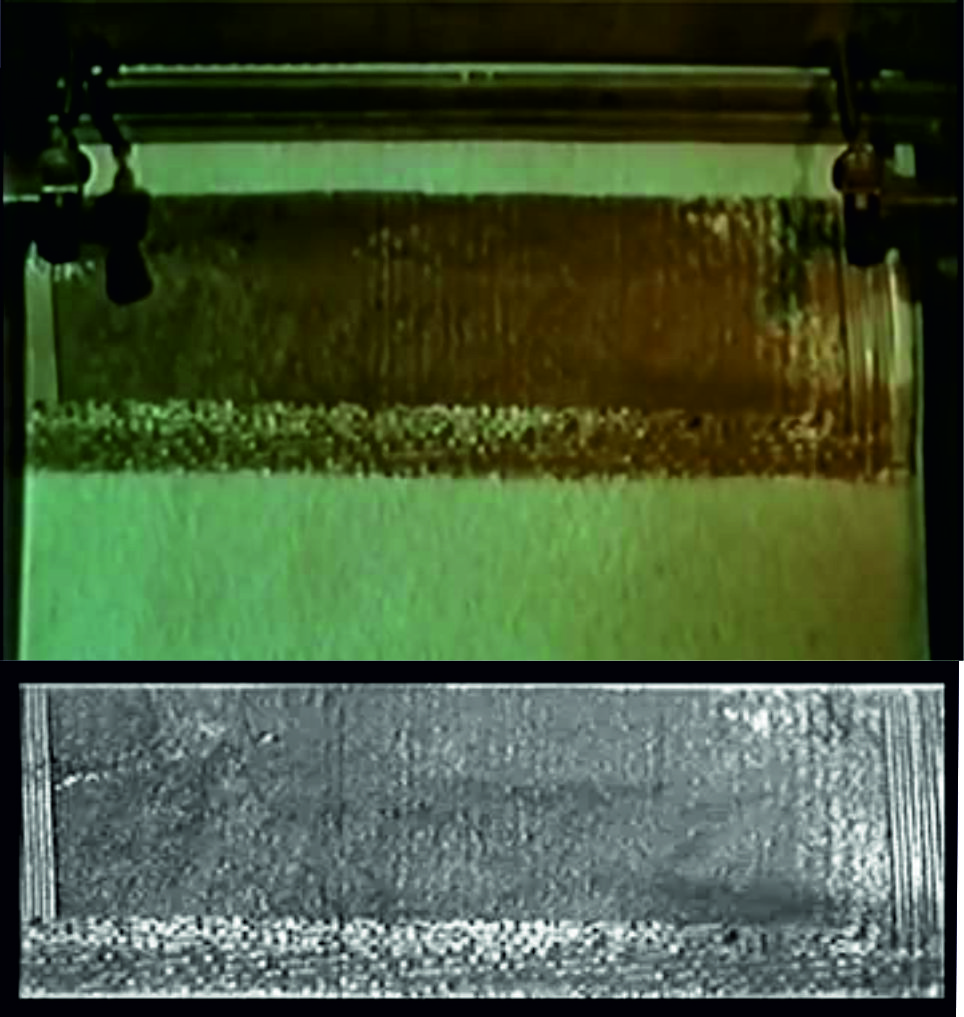We process forgotten pictures from the forgotten lunar station

Story
On July 21, 1969, almost at the same time as Neil Armstrong and Edwin Aldrin left the surface of the Moon, the Soviet interplanetary station Luna-15 crashed on our natural satellite. She had to bring the soil at the same time as the American astronauts.
')
One of the versions of the cause of her accident was inaccurate knowledge of the gravitational field of the moon. At the suggestion of Okhotsymsky, it was decided to create specialized stations to study both the Moon and its gravitational field.
When creating these stations in the NGO them. Lavochkin was not particularly wise for a long time and based on the E-8 Migration Station with the Lunokhod. Apparently, to speed up development and reduce prices. Because of what they began to look quite specific.
The first station of this type was the "Luna-19", launched September 28, 1971. She successfully entered the Moon's orbit, and certain information appeared in the media, after which everything gradually subsided.
There was nothing secret in the station. Simply, it was then clearly considered to be a “technological” device for clarifying certain points, and because of this, it was not very much promoted, as they would say today. The data obtained in the analysis of the gravitational field of the moon, of course, were published. But then they became known only to specialists. But about the station itself then said not so much.
All this led to the fact that for many years almost the only known image of the "Luna-19" or "Luna-22" (the next station in this series) was this picture.

More precisely, among the falerist was known medal, released to the flight "Luna-22". She had a good image of the station. But because of the small circulation, it became widely known only at the beginning of zero, with the development of social networks.

In any case, there was little information about the stations. In particular, their design features, equipment and elements of flight were not known. And this state of affairs persisted for a very long time. Many military devices were declassified, but the new information about the Luna-19/22 never appeared. Apparently, they were simply "forgotten".
In 2004, the Cosmonautics News Forum even asked the press secretary of Roskosmos, Vyacheslav Davydenko, a question. He was very surprised by the fact that there was a problem at all, and promised to sort it out. And soon on the site of the NGO. Lavochkin detailed technical information appeared on the stations of this series.
One and two

Telephotometer station "Luna-19/22." Vertical sweep due to the rotation of the mirror, horizontally due to the movement of the station
Alas, despite the fact that there were telephotometers for obtaining images of the surface of the Moon, the images themselves were not published. This was clearly explained by the fact that, according to the published history, due to the failure of the control system, a working orbit was not formed and “the survey of certain regions of the lunar surface was carried out in the spin mode, which led to the blurring of images. A total of 12 shooting sessions were conducted and 41 photographs of the lunar surface were taken. ”
As a result, all the information about the photographs of the Moon obtained from Luna-19 was limited to those shots that we managed to publish in 1972, hot on the heels. And they had a very bad quality. For example:

or

By the way, the link to the site of the NGO. Lavochkin you can find an image that belongs to the "Luna-19", but this is a mistake! It refers to the "Luna 22".
Original images
As a result, when I had the opportunity to order copies of the Luna-19 images, I did it. It turned out that the entire frame transmitted by the station looked like this:

For some reason, the archive kept pictures in both positive and negative. It turned out that I ordered both options. Apparently, these are copies from printouts, on which the date of shooting was set by hand. It is clearly seen that shooting in spin did not really differ in quality. But the rich ...
Actually, these are really full telemetry frames. On the borders of the picture you can see small rappers. Two types. Let's call them big and small. Moreover, comparing them in different parts of the file shows that their form is slightly different.

The developer of the Soviet television space systems Arnold Selivanov with reference to another scanning system wrote about such markers:
It had a characteristic line structure, typical of panoramic television scanning devices, contained a synchronization signal in the form of a packet of rectangular pulses transmitted during the so-called “reverse motion” of a horizontal scanning mirror. ... A packet of rectangular pulses that was inserted into the signal in the reverse direction line scan, modulated by the width of the signal ARCH, which allowed us to determine the level of ambient light. "
This is from the description of the work of the Mars-3 telephotometer. Apparently, we see this packet of rectangular pulses in the Luna-19 images. There were few differences in the approach. Fortunately, Mars-3 and Luna-19 worked almost simultaneously.
For clarification, I even decided to check. Evaluate the brightness level of the image on the image and compare it with what the synchronization signal gives. On the left - data on image analysis, in the center - the study of both "large" and "small" pulses, on the right - the image itself. In my opinion, a certain correlation is

Actually, you can once again look at the data of "Mars-3." Now you can easily (by the side strips) determine when the receiver simply amplified the “white noise”, and when telemetry with its CA really went. Alas, the resolution is too low, and the block of rectangular pulses is simply not visible.

A frame from the movie "Spacecraft M-71", 1972
Treatment
To process the image, it was decided not to use any editor, but to write a program for direct work with files containing an image. And to increase the gradations of the image and getting rid of artifacts, I decided to simultaneously process both files, positive and negative. After their summation, a new file was formed, in which the necessary lines were programmatically shifted to obtain a rectangular image. Total:

Well, already from this image we get a photograph of the Moon:

The quality, of course, is not very high. But here the source was of poor quality.
When processing another frame from Luna-19 using the method described above, the snapshot was somewhat better

Also, at least one snapshot was then obtained without blurring.

Here it is. Here are three pictures from the "Luna-19" of 41.
Alas. Ordering copies of pictures is expensive. Moreover, when ordering, I did not know about positive / negative, because of which I received few individual shots. But when there will be money - I will try to order the remaining ones and select the best options from them in order to finally close this fragment of the history of the national astronautics.
If someone wants to try to process the image on their own, here you can take the source of one image.
And the pictures themselves are planned to be used in the design of the book.
Source: https://habr.com/ru/post/399733/
All Articles